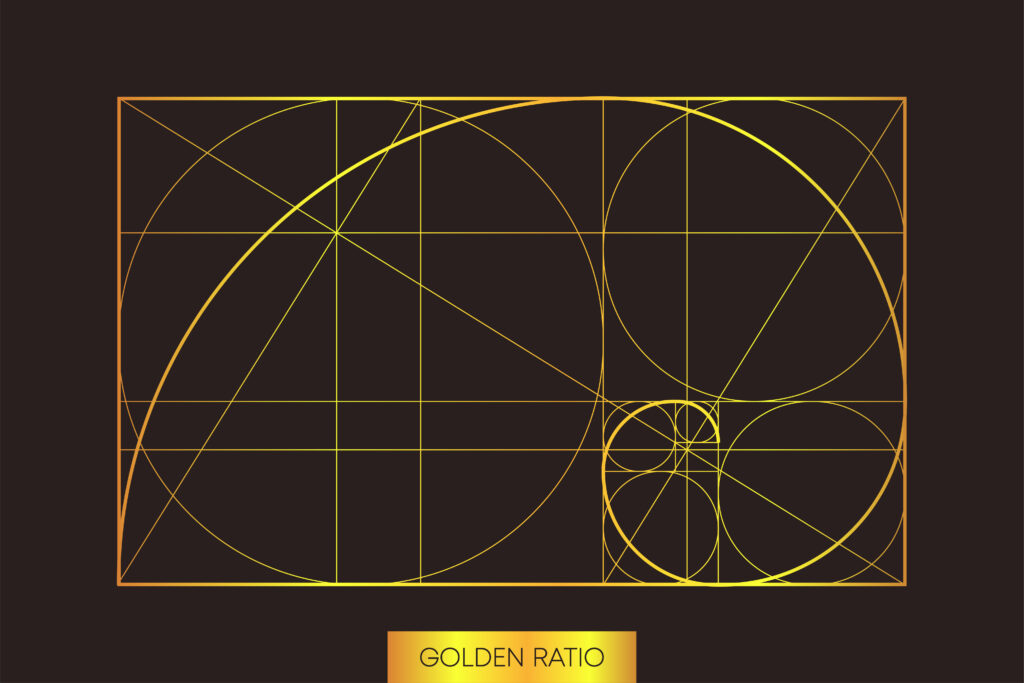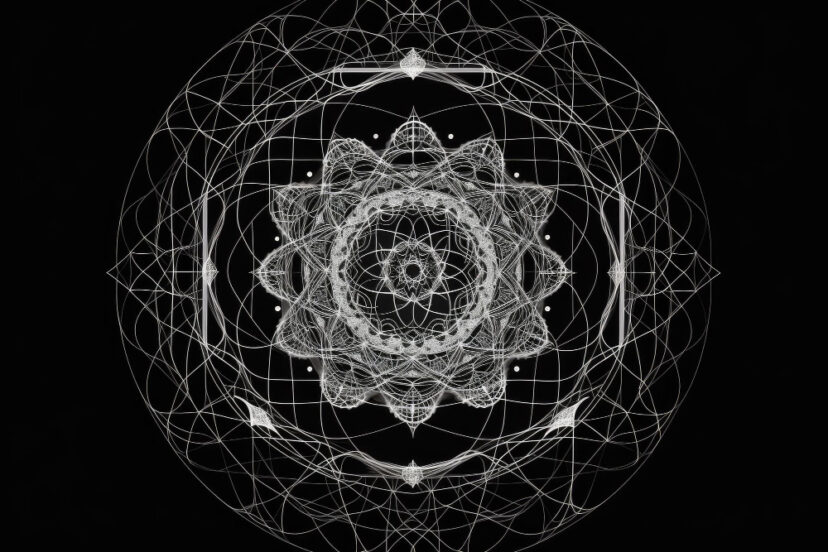The Mystical World of Sacred Geometry: Discovering Nature’s Hidden Blueprint
Think about nature for a moment. Have you ever gazed at a seashell’s perfect spiral or marveled at the precise hexagons in a honeycomb? These aren’t random patterns—they’re part of something far more profound. Welcome to the fascinating world of sacred geometry, where mathematics meets mystery, and science dances with spirituality. In this journey through the fundamental patterns of existence, we’ll explore how these ancient principles continue to shape our understanding of the universe and ourselves.
Understanding Sacred Geometry: More Than Just Shapes and Numbers
At its heart, sacred geometry isn’t just about mathematical concepts—it’s about discovering the invisible templates that create everything in our universe. From the smallest atoms to the largest galaxies, these geometric patterns serve as the fundamental blueprint of creation. Think of sacred geometry as nature’s own architectural plans, revealing how the universe organizes itself with remarkable precision and beauty.
Every culture throughout history has recognized these patterns, seeing in them something beyond mere coincidence. Whether you’re examining the spiral of a DNA molecule or the arrangement of petals on a flower, you’re witnessing sacred geometry in action. It’s a universal language that transcends cultural boundaries, speaking directly to our innate sense of harmony and order.
The Ancient Wisdom of Sacred Geometry
Our ancestors weren’t just stumbling in the dark when they incorporated geometric principles into their sacred spaces and art. They were onto something profound—a understanding that we’re only now beginning to fully appreciate with our modern scientific tools.
Egyptian Mastery
The ancient Egyptians weren’t just skilled builders—they were masters of sacred geometry. The Great Pyramid of Giza isn’t simply an impressive tomb; it’s a mathematical marvel that encodes the golden ratio, pi, and precise astronomical alignments. These weren’t arbitrary choices but deliberate decisions reflecting their deep understanding of universal principles.
Greek Philosophical Foundations
When Pythagoras declared “all is number,” he wasn’t just being poetic. The Greek philosophers saw sacred geometry as the bridge between the visible and invisible worlds. Plato’s geometric solids weren’t just interesting shapes—they were his attempt to explain the very elements that make up our reality.
Eastern Wisdom Traditions
In the East, sacred geometry found expression in mandalas and yantras. These weren’t just beautiful designs; they were tools for meditation and spiritual growth. Hindu and Buddhist practitioners understood that by contemplating these geometric patterns, they could align themselves with the fundamental rhythms of the universe.
Islamic Geometric Artistry
Islamic artists and architects took sacred geometry to new heights, creating incredibly complex patterns that seem to stretch into infinity. These weren’t just decorative choices—they were expressions of divine unity and mathematical harmony, demonstrating how the finite can point toward the infinite.
The Language of Creation: Key Symbols in Sacred Geometry
The Flower of Life: Nature’s Master Pattern
Imagine a pattern so fundamental that it contains within itself the blueprints for everything in the physical world. That’s the Flower of Life—a series of perfectly overlapping circles that has fascinated mystics and mathematicians for millennia. Look closely at this pattern, and you’ll find everything from the structure of molecules to the arrangement of planets hidden within its lines.
Metatron’s Cube: The Universe in a Single Symbol
When we talk about sacred geometry, Metatron’s Cube stands out as one of its most complex and meaningful symbols. Picture thirteen circles connected by straight lines, creating a pattern that contains every one of Plato’s solids. It’s like a cosmic architectural drawing, showing how three-dimensional reality emerges from two-dimensional patterns.
The Golden Ratio: Divine Proportion
Nature’s favorite number isn’t a whole number at all—it’s approximately 1.618, known as the golden ratio. This mysterious mathematical constant shows up everywhere: in the spiral of galaxies, the arrangements of leaves on a stem, and even in the proportions of the human face. It’s as if the universe has a preferred way of growing and organizing itself.

Sacred Geometry in the Natural World
The most compelling evidence for sacred geometry isn’t found in ancient texts or philosophical treaties—it’s written in the book of nature itself.
The Mathematics of Life
Watch a fern unfurl its fronds or examine the arrangement of seeds in a sunflower head, and you’re seeing sacred geometry in action. The Fibonacci sequence—a series of numbers where each is the sum of the previous two—appears again and again in plant growth patterns. It’s not just beautiful; it’s mathematically optimal for things like maximizing sunlight exposure or seed distribution.
Cosmic Patterns
Look up at the night sky, and you’re seeing sacred geometry on a cosmic scale. Planetary orbits follow elliptical paths, galaxies spiral in logarithmic curves, and even the distribution of matter in the universe follows geometric principles. It’s as if the same patterns repeat at every scale, from the microscopic to the astronomical.
Sacred Geometry in Modern Life
While these principles might seem ancient, they’re more relevant today than ever.
Architecture and Design
Modern architects and designers are rediscovering the power of sacred geometric principles. From sustainable building designs to innovative product packaging, these timeless patterns are finding new applications in solving contemporary challenges.
Technology and Innovation
The fractal patterns of sacred geometry have revolutionized computer graphics, telecommunications, and even medical imaging. When we needed to design efficient antennas or create realistic computer-generated landscapes, we turned to the same patterns nature has been using all along.
Healing and Wellness
Many alternative healing practices incorporate sacred geometric principles, from crystal grids to meditation spaces. While the scientific evidence for these applications varies, there’s no denying the calming effect that harmonious geometric patterns can have on our psyche.
Living with Sacred Geometry
You don’t need to be a mathematician or mystic to benefit from sacred geometry. Here are practical ways to incorporate these principles into your daily life:
- Create a meditation space using geometric patterns
- Spend time in nature observing natural geometrical forms
- Use sacred geometry in your own creative projects
- Wear jewelry or display art featuring these ancient patterns
The Eternal Mystery
As we’ve explored the world of sacred geometry together, one thing becomes clear: these patterns are more than just interesting designs. They’re a key to understanding the mathematical principles that govern our universe, from the smallest flower to the largest galaxy.
Whether you approach sacred geometry as a spiritual seeker, an artist, or a scientist, its patterns offer insights into the fundamental nature of reality. In a world that often seems chaotic and disconnected, sacred geometry reminds us that there is order in the universe—and that we’re all part of its grand design.
As you go about your day, take a moment to notice the geometric patterns around you. That spiral staircase, the petals of a flower, or the branching pattern of trees—they’re all speaking the same mathematical language that has fascinated humanity for thousands of years. In understanding sacred geometry, we don’t just learn about shapes and numbers; we discover our place in the cosmic dance of creation.
We may earn a commission for purchases made using our links. Please see our disclosure to learn more.




